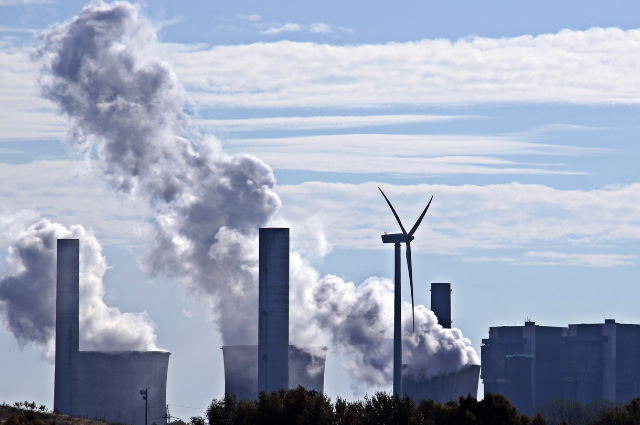
Image by NoName_13 from Pixabay
Air pollution is a major global health issue causing approximately 7 million deaths each year. The health risks are significant including a higher likelihood of cardiovascular and respiratory diseases. However, not everyone is equally affected by air pollution. The impact is much more severe in developing countries that are undergoing industrialization. These nations often have less strict air quality regulations and rely on older, more polluting machinery and vehicles. Subsidized fossil fuels and congested urban transport systems contribute to the problem as does the rapid growth of industrial sectors and the use of cut-and-burn practices in agriculture. Additionally, the lack of affordable quality healthcare services in these regions means that people are more likely to die from pollution-related illnesses.
Within countries, air pollution tends to hit poorer and marginalized communities the hardest. Low-paying jobs often require outdoor labour, increasing exposure to polluted air. Moreover, sources of pollution such as industrial plants and busy transportation routes are frequently located in low-income neighbourhoods. As pollution rises, housing prices in these areas fall, continuing with the cycle of poverty. Thus, air pollution not only harms health and productivity but also worsens socio-economic inequalities making it a pressing issue that needs urgent attention.
Overview of Findings
A recent study co-authored by researchers from MIT reveals significant differences in people's exposure to air pollution. Unlike traditional studies that only consider where people live or work, this research incorporates daily mobility patterns using mobile data. This approach provides a more thorough understanding of how the environment affects individuals.
Methodology: Beyond Fixed Locations
The study goes beyond static measurements of air pollution exposure which are typically based on residential or workplace locations. By examining where people travel during their day, the researchers could more accurately assess exposure levels. They discovered that when daily movement is considered, exposure to particulate matter (PM2.5) increases by approximately 2.4%.
Enhancing Data Precision
Paolo Santi, a principal research scientist at MIT's Senseable City Lab, emphasizes the study's improved data accuracy. He explains that combining detailed air quality information with precise mobility data allows for the creation of detailed movement trajectories. This combination enabled the researchers to develop a new measure of pollution exposure.
Complex Exposure Patterns
Daily exposure to pollution is a complex mix influenced by living near, working near or travelling past sources of particulate matter. An Wang from the Hong Kong Polytechnic University, another study co-author notes that understanding city-wide movement for jobs, education and other activities provides better insight into exposure patterns.
Publication and Contributors
The findings will be published in the journal Nature Cities under the title "Big mobility data reveals hyperlocal air pollution exposure disparities." The study's authors include Iacopo Testi and Fabio Duarte from the Senseable City Lab and An Wang from Hong Kong Polytechnic University; Sanjana Paul, a graduate student at MIT; Simone Mora from the Senseable City Lab; Erica Walker from Brown University School of Public Health; Marguerite Nyhan from the National University of Ireland, University College Cork; Paolo Santi; and Carlo Ratti, director of the Senseable City Lab.
Monitoring Pollution in the Bronx: A Detailed Study
In a groundbreaking study, researchers deployed solar-powered environmental sensors on New York City's civic service vehicles operating in the Bronx. These sensors included optical particle counters, temperature, humidity sensors and GPS. This innovative approach leverages existing city resources to monitor air pollution.
Using City Fleets for Environmental Monitoring
Mora, a lead researcher emphasised the effectiveness of this strategy by emphasizing that cities can repurpose their fleets as environmental sensors. By doing so, they collected valuable data on air quality across different areas of the Bronx.
Tracking Human Movement and Pollution Exposure
To understand how people in the Bronx are exposed to pollution over time, the researchers analyzed anonymized phone records from 500,000 individuals which amounted to 500 million daily location records in New York. This provided a comprehensive view of how pollution levels varied in different parts of the Bronx.
Key Findings on Pollution and Demographics
The ground-level data revealed that the southeastern Bronx, an area dense with expressways and industries had the highest levels of particulate matter. The mobility data exposed significant disparities in pollution exposure based on demographics. Income-related disparities existed but differences in exposure by ethnicity were more pronounced. Notably, some predominantly Hispanic communities experienced the highest levels of exposure. However, even within these communities exposure levels varied significantly.
Health Implications of Pollution Exposure
Duarte, another researcher pointed out the severe health implications of pollution exposure. The Bronx, plagued by the poorest air quality among New York City areas has asthma rates 2.5 times higher than the city's average. This stark statistic emphasises the direct impact of pollution on public health as evidenced by the high hospitalization rates for asthma in the Bronx.
Considerations and Future Research
The researchers acknowledged that the study was conducted in the fall of 2021 during the COVID-19 pandemic which may have influenced mobility patterns. Despite this, they are confident that their methods can inspire future studies on pollution exposure. Ratti, a co-researcher emphasized the potential of mobile data and vehicle-mounted sensors to create a comprehensive and cost-effective air quality monitoring system. By utilizing existing infrastructure, cities can significantly enhance their environmental monitoring capabilities.
Expanding the Scope of Pollution Studies
Wang, another researcher suggested that this granular approach to studying air quality could be expanded to include other types of air-quality hazards beyond PM 2.5 particles. He believes this study opens new avenues for analyzing various toxicities in conjunction with exposure data that will be paving the way for more detailed and expansive environmental research. This study demonstrates how innovative use of technology and existing resources can provide critical insights into pollution exposure and its health impacts that will be offering a model for future environmental monitoring and research.
. . .
References:
